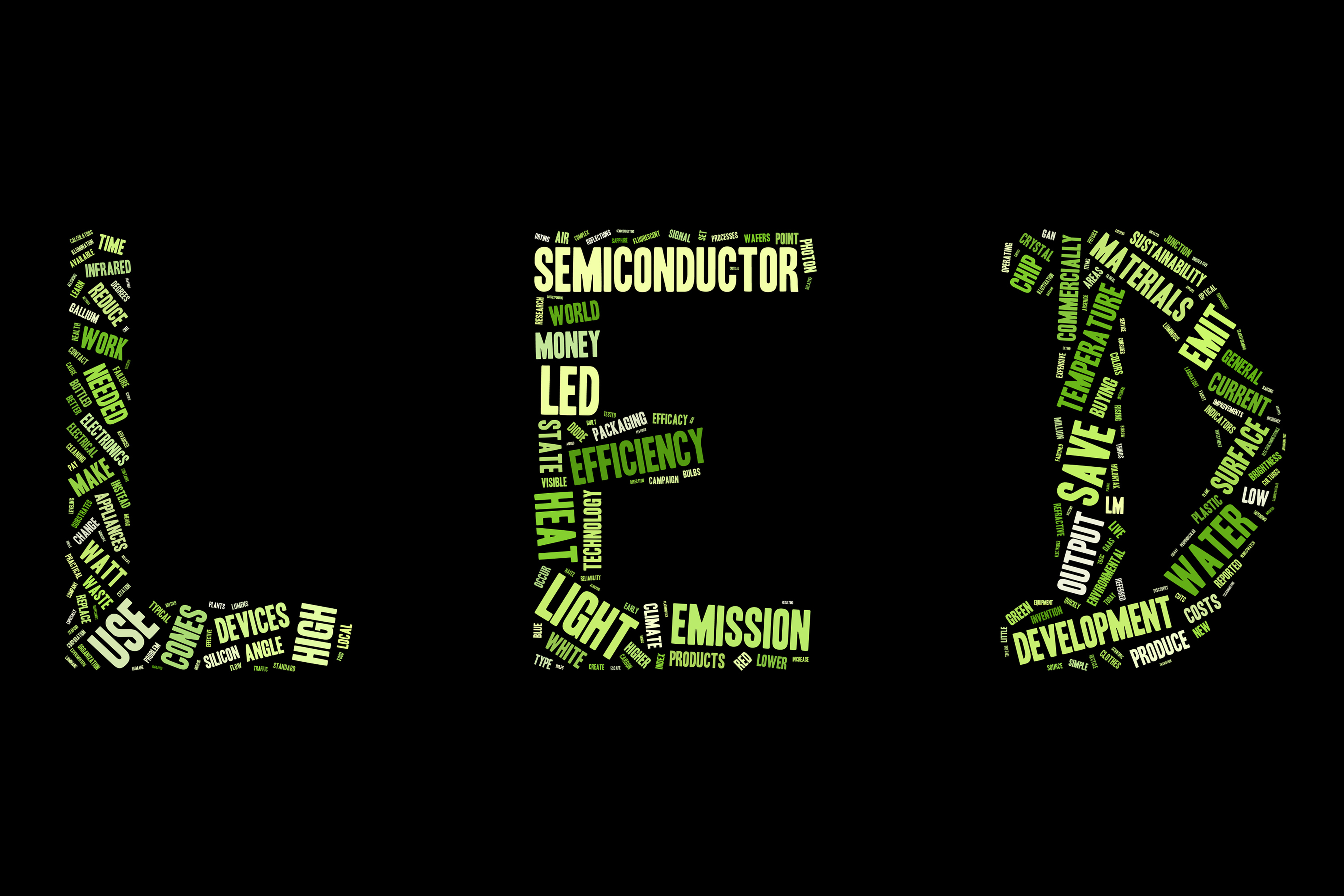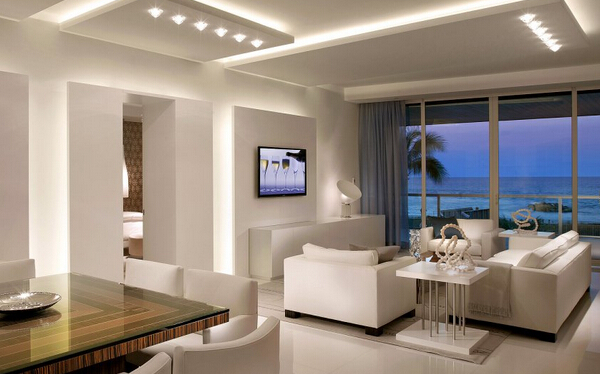LED lighting offers many advantages over traditional light sources, opening new ways to use light that weren’t possible before. As the technology continues to revolutionize the lighting industry, it’s important to understand how an LED light source works.
How does an LED work?
LED stands for Light Emitting Diode, and this light source should not be confused with a light fixture or luminaire. An LED is a component of the entire fixture. LED lighting can also be referred to as solid-state lighting (SSL) because an LED is solid-state technology similar to the memory in your computer.
LEDs consists of four main parts: die, substrate, phosphor and lens. The LED die is a semiconductor device made of gallium nitride (GaN). When electric current passes through the die, it emits blue light. One or more die are then mounted to a substrate commonly made of aluminum or ceramic. This allows easier integration of the LED into a fixture and provides an efficient way to bring power to the LED.
For general lighting applications, white light is generally desired, not blue. In order to achieve the target color, phosphor is used. When the blue light hits phosphor particles, they glow and emit white light. The phosphor can be applied to the die directly, or it can be mixed into the lens material, which typically consists of silicon or glass. The lens extracts and directs the light emitted from the die.

A tale of two die: LED configurations
There are two standard configurations of an LED—emitters and COBs.
An emitter is a single die mounted to a substrate. The emitter is mounted to a circuit board, which is then mounted to a heat sink. This circuit board provides electrical power to the emitter, while also drawing away heat.
To help reduce cost and increase light uniformity, researchers discovered that the substrate of the LED can be removed and the die can be mounted directly to the circuit board. This configuration is known as a chip-on-board array, or COB.
Four-part harmony of a luminaire
The LED configuration is an important part of the luminaire design. A typical LED system has four components: the LED light source, optics, a heat sink and a power supply.
An optic is placed over or around the LED, helping extract the light from the die, and forming the scattered light emission into a specified shape. The LED is mounted to a heat sink which diverts and dissipates heat to keep the LED cool.
Most LED systems require a DC (direct current) power source. The electricity in a building is typically AC (alternating current) so a power supply is used to convert the AC power to DC power.
A cool LED is a happy LED
A crucial consideration in LED design is heat transfer. When you put electricity to an LED, some of that energy is converted into light, but the rest turns into heat. As the module heats up, its efficacy drops.
The heat sink gets heat out of an array and into the ambient air, so its design is important. If the heat sink is too small for the LED package, it will not dissipate enough heat, which lowers the efficacy and brightness of the LED. A luminaire must be designed to handle the thermal requirements of the LED, keeping the LED cool.
About Bridgelux
At Bridgelux, we specialize in high-performance COB arrays with easy integration options. Learn more about how we can help you solve your lighting needs through our Design Services.


